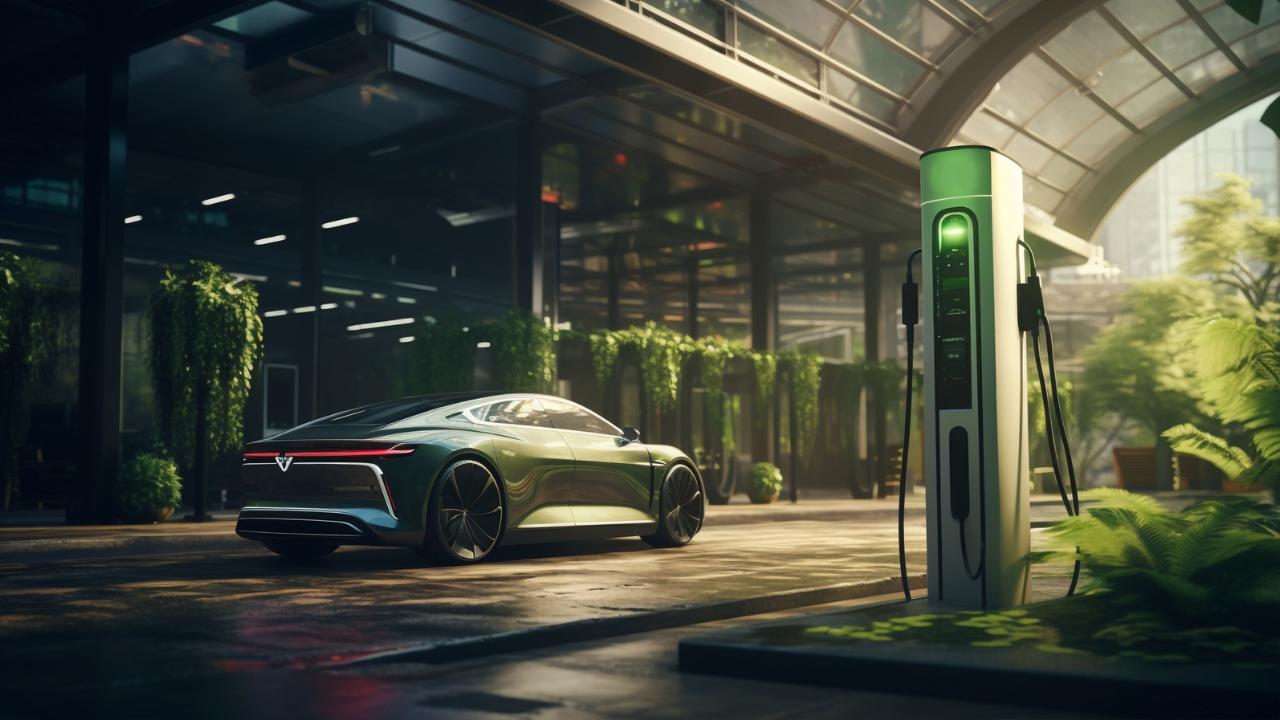Table Of Contents
- Types of Charging Stations
- Level 1 – Utilizing a standard household outlet
- Level 2 Charging
- DC Fast Charging (Level 3)
- Charging Networks and Apps
- How to Use a Charging Station
- Charging at Home vs. On the Go
- Home Charging
- Public Charging
- Tips for Efficient Charging
- The Future of EV Charging
- Find Electrical Car Charging Stations Near You!
Charge Up: The Complete Guide To Charging An Electric Car
Electric vehicles (EVs) are proliferating across roads worldwide, offering the allure of zero-emission motoring, lower running costs, and, of course, picture postcard styling.
One key part of owning an electric vehicle soon dominates as more drivers make the switch: charging. Being aware of how and where to charge your electric vehicle (EV) is crucial for convenience and efficiency.
This guide will explain everything you need to know about an electric car charging station, including different types of chargers and how to find one and use one effectively.
Types of Charging Stations
The three primary types of electric car charging stations are listed below; each has a different power delivery capacity and fluctuating speeds:
Level 1 – Utilizing a standard household outlet
Level 1 chargers are the slowest and least powerful kind; they connect to regular 120-volt outlets. They are perfect for charging your car overnight at home or in locations where it will be parked for extended periods of time. On average, they might charge between three and five miles per hour.
Perfect for: Plug-in hybrid vehicles or EV owners that don’t make lengthy everyday travels.
Level 2 Charging
Level 2 chargers are significantly faster than Level 1 chargers and need a 240-volt power source. They may be installed at home and are frequently seen at public charging stations and workplaces. For every hour of charging, these chargers typically have a range of 10 to 60 miles.
Best for: Daily EV use and quick home charging.
DC Fast Charging (Level 3)
DC Fast Chargers, also known as super or rapid charging, use high-voltage direct current to feed the battery directly, removing the car’s onboard charger as a bottleneck. Depending on your car and the charger you select, an EV can be charged to 80% capacity in as little as 20 to 40 minutes.
Great for: Long distance travel, and also fast top ups.
Charging Networks and Apps
There are several charging networks and they are regional—so each has its own sets of stations and membership packages. Some popular ones include:
Tesla Supercharger Network – Only for Tesla cars, these are some of the fastest, and most dependable charging stations.
ChargePoint – Offers a wide network in the US and other nations, with access using an app or RFID card.
EVgo – Specializing in fast chargers in cities.
Electrify America – High-speed charging facilities are available in cities and on highways.
You must download apps from these vendors if you want to maximize your EV ownership experience. Many of these applications enable the user to:
- Find nearby stations
- Check availability in real-time
- Pay for charging
- Monitor charging progress remotely
How to Use a Charging Station
At a public station, charging your EV is effortless. Here’s a general step-by-step process:
Find a Station: Turn to your car’s navigation system, a smartphone app, or a website like PlugShare to figure out when to swap in and where to charge.
Plug In: Plug in the third connection after opening your charge port. Ensure it is compatible with your car.
Authenticate: Swipe a membership card or have an app scan a QR code; it depends on the network.
Charging Monitor: Many chargers have digital displays that keep you updated on charging status. You can also monitor it via your car’s dashboard or app.
Unplug and Off You Go: Detach as soon as you are done charging to stretch the life of your cable.
Charging at Home vs. On the Go
Charging at home vs. in public: Here’s what’s different:
Home Charging
The majority of EV owners buy and install a home Level 2 charger, which is the best mix of convenience and speed. Charging at home overnight means never having to hit a public charger the next morning.
Public Charging
Though not an everyday requirement for many drivers, public charging is critical for long-distance travel and for people with no access to home chargers (as in apartment dwellers). Public chargers like those located along highways or in shopping center parking lots, are strategically placed to contribute to the flexibility an EV offers.
Tips for Efficient Charging
Prepare: Research your route and where chargers are placed ahead of time.
Charge In Off-Peak Hours: Some utilities have reduced rates if you charge at night.
Don’t Always Charge All the Way: Regular full charges and discharges have been shown to deteriorate battery health over time. The 80% charge is adequate for daily use.
Be Considerate : If you’re done charging, drive your car away to make room for someone else.
The Future of EV Charging
The infrastructure for that shift just keeps expanding as more and more people switch to EVs. The future will likely include:
Quicker Chargers: Super-fast charges with up to 350 kW are already rolling out.
Wireless Charging: Manufacturers and developers are working on inductive charging pads that would let EVs charge by parking over them.
Solar-Powered Stations: These green chargers will lessen dependence on the grid.
Governments and companies, both private and public, are spending billions to expand networks, increase access, and standardize charging equipment, making car ownership even easier.
Find Electrical Car Charging Stations Near You!
Electric car charging doesn’t have to be difficult. With the right info and equipment, it can be an easy part of your day. Understanding the different kinds of chargers and where to locate them will keep your EV and you moving forward, whether you’re filling up at home, getting a quick charge on the highway, or planning a cross-country road trip. Charge up and head out for the thrilling journey that lies ahead.














